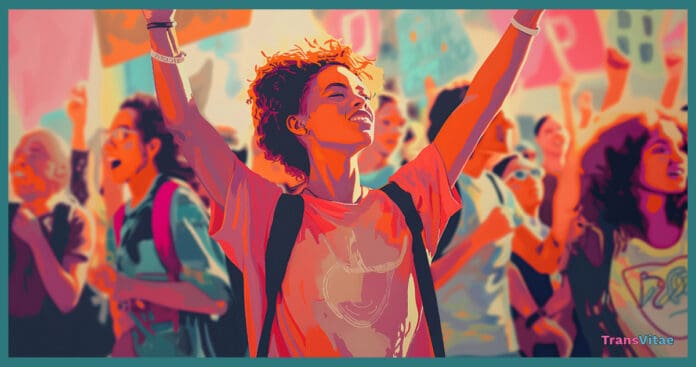In our increasingly interconnected world, the concept of intersectionality has become crucial in understanding the multifaceted experiences of individuals, particularly those within marginalized communities. For transgender people who also identify as members of other marginalized groups—such as racial minorities, people with disabilities, or people from various socioeconomic backgrounds—these overlapping identities have a significant impact on their journeys in addition to gender identity.
What is Intersectionality?
Intersectionality is a framework developed to explore the dynamic between coexisting identities and connected systems of oppression. This idea, which Kimberlé Crenshaw first used in the late 1980s, enlightens us on how social and cultural identities interact to produce distinctive forms of privilege and discrimination. For transgender individuals, this means their experiences of acceptance, discrimination, and personal safety can significantly differ based on their race, disability, class, and more.
The Trans Experience Through an Intersectional Lens
Transgender individuals often face significant challenges, including discrimination in healthcare, employment, and within social settings. However, these difficulties are not all the same and have a significant impact on other facets of their identity.
Race and Ethnicity
Transgender people of color may confront compounded discrimination. For instance, Black and Asian transgender individuals often report higher levels of violence and harassment than their white peers. The pursuit of safety and equality is particularly difficult because systemic racism exists in sectors like policing, healthcare, and employment, which further exacerbates these experiences.
Disability
Transgender individuals with disabilities face additional barriers. Accessibility in healthcare, one of the most critical issues for transgender people, can be a significant hurdle for those with physical disabilities. Moreover, cognitive disabilities can make it difficult to access gender-affirming care due to complex medical systems and potential biases among healthcare providers.
Socio-economic Status
Economic background also plays a crucial role in the lives of transgender individuals. Those from lower socio-economic backgrounds may struggle with access to healthcare, stable housing, and employment, further limiting their ability to express their gender identity safely and comfortably.
Stories of Intersectionality
By sharing stories from transgender individuals at these intersections, we can gain a deeper understanding and appreciation of the complexities involved. For instance, a transgender Latina woman dealing with mobility impairments will have a different narrative from a transgender white man from an affluent background. These stories highlight the need for tailored approaches in advocacy and support, ensuring that no one is left behind.
Advocacy and Support
Effective advocacy for transgender rights must consider these intersecting identities. Organizations and policymakers need to create inclusive environments that address the specific needs of transgender individuals who also belong to other marginalized groups. This could mean:
- Providing training for healthcare professionals on both trans healthcare and culturally competent care for ethnic minorities.
- Ensuring that transgender rights movements are inclusive of and led by transgender people of color.
- Developing resources and support networks specifically for transgender individuals with disabilities.
Moving Forward
Understanding intersectionality is not just about recognizing differences; it is crucial in fostering a truly inclusive society. It’s about transforming how movements for social justice, including transgender rights, conceptualize and address the complexities of human identity. Each intersection of identity offers a unique perspective that can enrich our understanding and strengthen our collective advocacy efforts.
Inclusion means not only supporting transgender rights but actively working to understand and dismantle the overlapping systems of oppression that affect transgender people across different intersections. By doing so, we can work towards a world where every transgender individual, regardless of their race, disability, or economic status, can live authentically and safely.
For allies and members of the transgender community, embracing an intersectional approach in your advocacy and daily interactions can make a significant difference. It’s about listening to, respecting, and uplifting voices that may differ or even challenge one’s own perspectives. It’s about being an ally, not just in words but in actions.
The Bottom Line
The journey towards full equality and understanding for all transgender individuals is complex and multifaceted. By acknowledging and addressing the layers of intersectionality within the trans community, we can better support each other’s complete identities.
This approach not only enriches our communities but also pushes us closer to a more equitable society. Let us be diligent in our efforts to understand and act upon the intersections of trans identity with race, disability, and more, as we strive for a world that honors and celebrates every aspect of our being.


